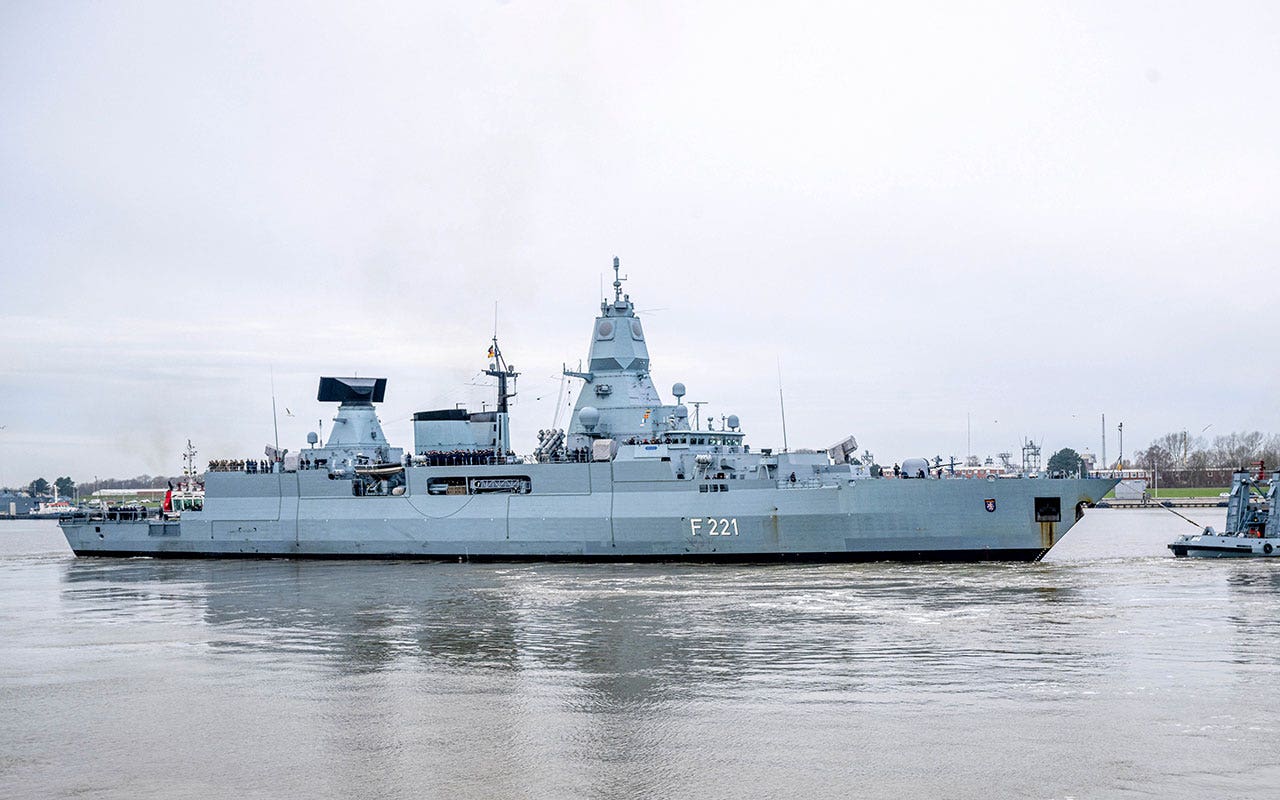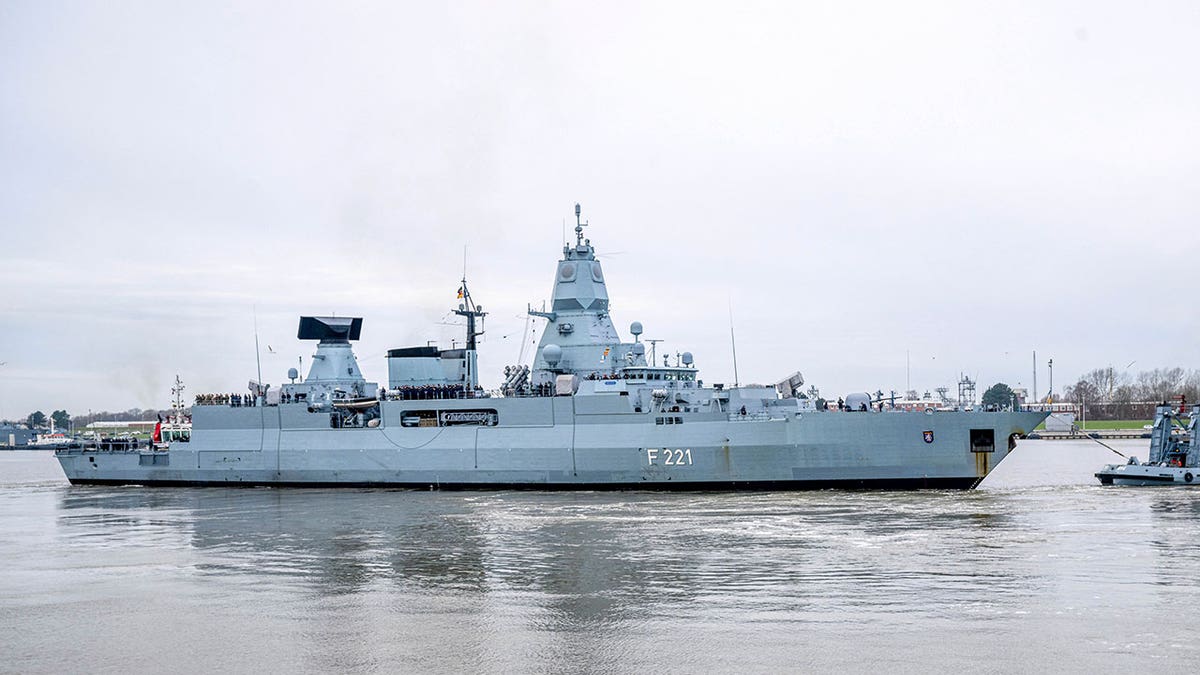
- The German Navy frigate Hessen has departed from Wilhelmshaven towards the Red Sea for a European Union mission aimed at defending cargo ships from Houthi rebel attacks.
- Approximately 240 personnel are aboard the Hessen, awaiting official approval from both the EU and the German parliament to join the mission.
- EU foreign ministers are scheduled to approve the Red Sea mission later this month, with seven member countries offering ships or planes.
A German Navy frigate set sail on Thursday toward the Red Sea, where Berlin plans to have it take part in a European Union mission to help defend cargo ships from attacks by Yemen’s Iranian-backed Houthi rebels that are hampering trade.
The Hessen set off from the North Sea port of Wilhelmshaven with about 240 servicepeople on board. The aim is to have it in place once the EU mission is given the official go-ahead and the German parliament has approved a mandate for the ship to join in, which is expected at the end of February.
EU foreign ministers are expected to sign off on the Red Sea mission on Feb. 19. Officials have said that seven countries in the bloc are ready to provide ships or planes.
FARMERS BLOCK SPANISH HIGHWAYS IN PROTEST OF EUROPEAN UNION BUREAUCRACY
The Iranian-backed Houthis have waged a persistent campaign of drone and missile attacks on commercial ships over Israel’s offensive in Gaza against Hamas, which began in October.

The frigate “Hessen” leaves the port at Wilhelmshaven, Germany, on Feb. 8, 2024, for the Red Sea. Berlin plans to have the ship take part in a European Union mission to help defend cargo ships from attacks by Yemen’s Iranian-backed Houthi rebels that are hampering trade. (Sina Schuldt/dpa via AP)
However, the rebels have frequently targeted vessels with tenuous or no clear links to Israel, imperiling shipping in a key route for global trade between Asia, the Middle East and Europe.
U.S. and British forces have carried out strikes against targets used by the Houthis, seeking to disrupt their missile-launching capabilities. But the EU’s foreign policy chief, Josep Borrell, has said the EU mission — dubbed Aspides, from the Greek for “shield” — won’t take part in any military strikes and will only operate at sea.
Meanwhile, the U.S. Central Command said on X, previously known as Twitter, that its forces conducted self-defense strikes against two Houthi mobile anti-ship cruise missiles on Wednesday morning as they prepared to launch against ships in the Red Sea.
And on Wednesday night, U.S. forces conducted a second strike against a Houthi mobile land attack cruise missile that was being prepared for launch.
“CENTCOM identified these missiles in Houthi-controlled areas of Yemen and determined they presented an imminent threat to U.S. Navy ships and merchant vessels in the region.” the post said. “These actions will protect freedom of navigation and make international waters safer and more secure for U.S. Navy and merchant vessels.”
EUROPEAN UNION LEADERS SEAL $54 BILLION AID PACKAGE FOR UKRAINE AFTER HUNGARY LIFTS VETO THREAT
The second strike came shortly after a U.S. drone blew up a car in the Iraqi capital, killing a high-ranking commander of the powerful Kataib Hezbollah militia on Wednesday night in Baghdad. The commander, Wissam Muhammad Sabir Al-Saadi, known as Abu Baqir Al-Saadi, was in charge of Kataib Hezbollah’s operations in Syria and responsible for “directly planning and participating in attacks” on American troops in the region.
In recent weeks, the United States and the United Kingdom, backed by other allies, have launched airstrikes targeting Houthi missile arsenals and launch sites for its attacks.
An air assault last Friday in Iraq and Syria targeted other Iranian-backed militias and the Iranian Revolutionary Guard in retaliation for a drone strike that killed three U.S. troops in Jordan.






